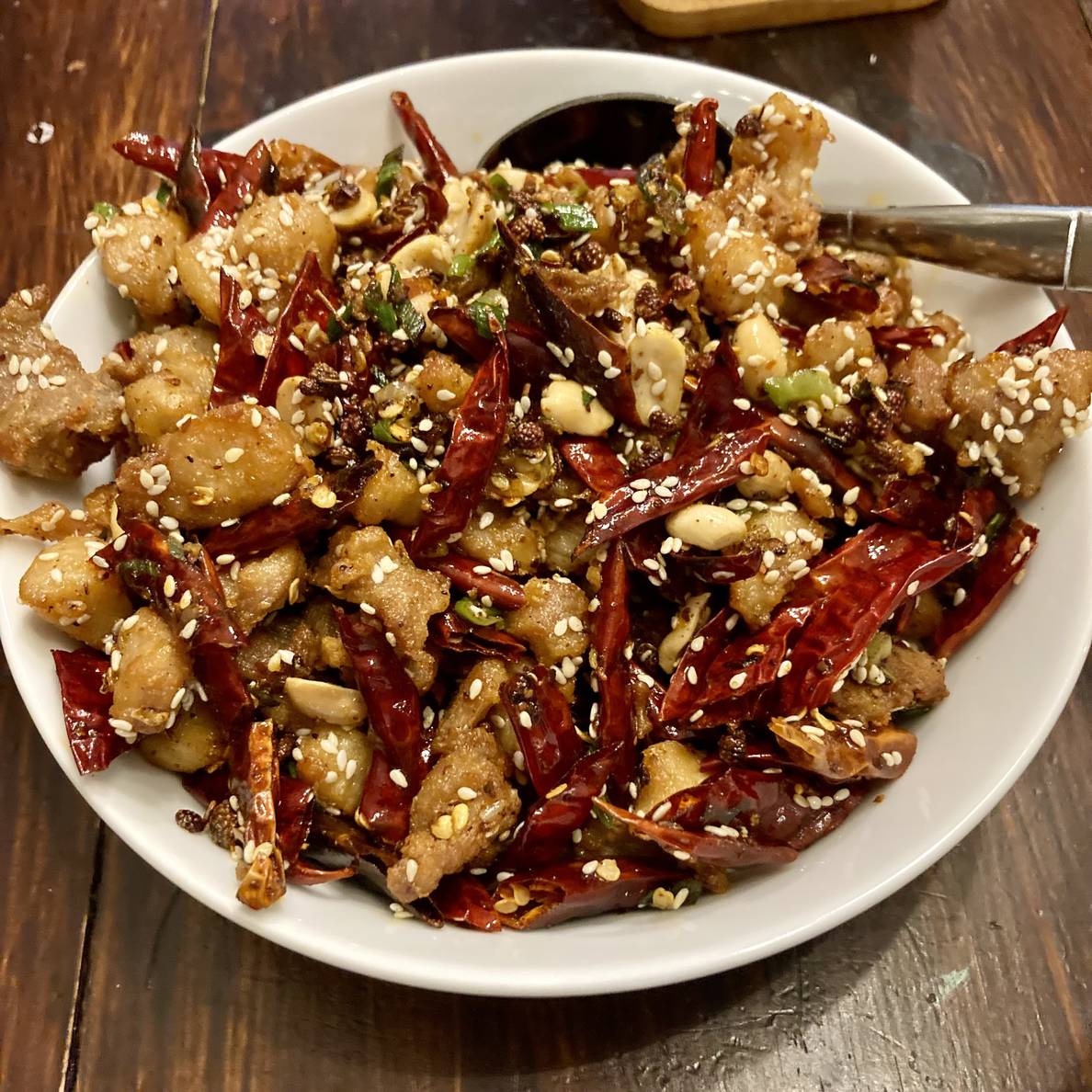Tuesday I made the Chongqing-Style Dry-Fried Chicken recipe from J. Kenji Lopez-Alt’s The Wok cookbook.
I’ve made a version of this recipe once before, from China Sichuan Food back in 2017. That one turned out just okay, but I have note that I used all California chiles, which turned out mild and to replace some with spicier chiles. Also that was eight years ago and maybe I’m a better cook now.
First, 1/2-inch cubes of chicken thighs are marinated in a mixture of soy sauce, Shaoxing wine, salt, egg, and corn or potato starch. I had both starches on hand, so used both. I also misread the 2 teaspoons of salt as 2 tablespoons, so had three times as much salt as I was supposed to. It seemed like a lot of salt to me, and I even double checked in the cookbook (I put all recipes in Paprika app), but only looked at the number, not the unit. The mixture looked quite liquid to me, which made me concerned about splatters as it fried, but after resting for at least 15 minutes, it was wet-but-not-soupy.
The marinated chicken gets double fried. My wok cannot fit the volume of oil Kenji calls for, so I did this in batches that made sense to me. I think I would do better with even smaller batches as the oil temp drops quite a bit more than Kenji wants and takes longer to recover. The first fry is at 350°F for about a minute, and the second fry is at 400°F for about 45 seconds, with a 5 minute rest in between.
Once the chicken is fried, the wok oil is moved to another container, and garlic, ginger, scallions, dried chiles, chile flakes, and Sichuan peppercorns are stir-fried. Kenji calls for a mixture of er jing tiao and chao tian jiao chiles. I used the last of what I think are chao tian jiao and picked up a couple of handful of de arból for the rest. By volume (two cups), I think it was enough, but by weight (3 ounces), I had about half the correct amount, which surprised me. Kenji calls for Sichuan or Korean chile flakes, I had both on hand and chose Sichuan since this is a Sichuan dish.
Once the aromatics are fragrant, the chicken is returned with some sugar, peanuts, and sesame seeds and all that gets stir-fried together briefly.
I thought it was good. Aside from the frying, I think this is the kind of Chinese dish Megan would like: flavor-forward and not gloopy-saucy. And even the fried chicken isn't a heavy-feeling fried with the light batter. My son really liked it.
I am cooking my way through J. Kenji Lopez-Alt’s The Wok cookbook. Read more about it.

